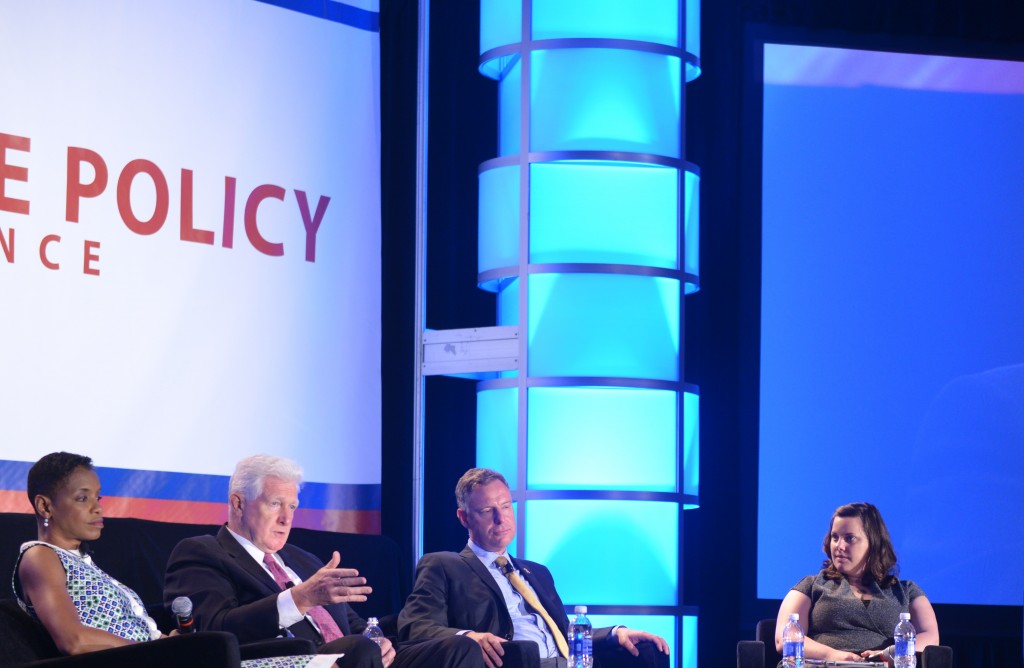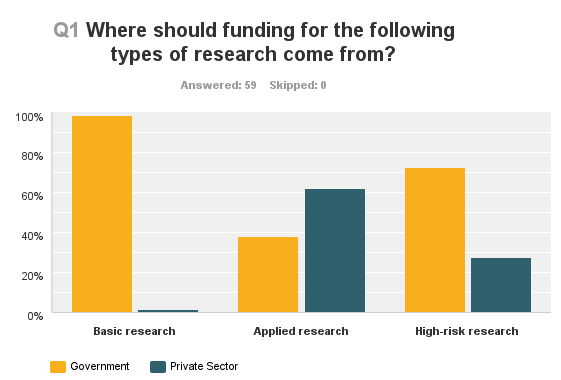June 26, 2014
This is how AGU does science policy
Posted by Fushcia Hoover
By Fushcia Hoover
WASHINGTON, DC – We’ve been looking forward to SPC ever since we started planning it at the beginning of the year. The Third Annual AGU Science Policy Conference, held in DC, brings together policy makers and policy shapers; from local, state, and national government who bear the responsibility to implement policy; community and industry leaders; and scientists with vital research findings and perspective on what is happening today and what we might expect in the years ahead. The goal of the conference is to create an on-going cycle of solution-focused dialogue that extends beyond the conference – one that is based on facts, real-world experience and relevant data from every perspective.
The first plenary, “Policy Perspectives: The Future of Science in the U.S. Congress,” consisted of an engaging group of policy makers who provided their insight and experiences in fighting for science funding and programs in Congress. Representatives Scott Peters (D-Ca. 52), Donna Edwards (D-Md. 4) and Jim Moran (D-Va. 8) while Energy and Environment reporter Erica Martinson of POLITICO moderated. During the hour and a half discussion, the panelists emphasized the importance of science informed legislation yet discouraged over the overwhelming void of this voice in Congress. When the moderator inquired about required steps and needs of Congress to fill this void, Representative Edwards responded with a shout at scientists to “speak up!” while Representative Peters informed the audience that in the best of times, 25 percent of science grants were funded, but to date that number has dropped to 7 percent. Furthermore, they all provided valuable insight and regarding what goes on in the House floor. Never was it made more apparent just how politicized science research has become, which is one reason why it is so difficult for climate-related legislation to make it through Congress. From a global context, Representative Moran hit home when he stated that “we have a responsibility to provide leadership when we have been the world’s worst polluter in the last two decades”. The need for scientists to actively involve themselves in the policymaking process by engaging their representatives and senators was made clear by all three of the plenary speakers, and hopefully carried through for members of the audience. Fellow AGU blogger Jessica Ball talks in depth on the need for scientist involvement on her blog.

Day one plenary panelists at AGU Science Policy Conference in DC. From left to right: Representatives Edwards, Moran, Peters, and POLITICO Energy and Environment reporter Erica Martinson.
The next day consisted of a keynote address by U.S. Secretary of the Interior Sally Jewell, who was incredibly down to earth and insightful during her morning talk. When speaking to the scientists in the room, she said “You are powerful. You have the power to shape our future, you have the influence to shape policy, but you need to be at the table”. The plenary on day three immediately following Secretary Jewell’s keynote was “The Business of Science: Is Public Investment Driving Private Innovation”? This time the panel was led by The Wall Street Journal energy reporter Amy Harder and panelists Kate Gordon, Executive Director of Risky Business, Tom Kimbis, VP of Executive Affairs at the Solar Energy Industries Association, and Peter Marquez, VP of Global Engagement for Planetary Resources, Inc. One memorable take away from the discussion was in response to a question form a member of the audience who asked when the issue of climate change would have its version of a “sputnik moment”. Mr. Marquez quickly replied that if the science community wants climate change to have the same level of funding and support that Space Race had, they needed to: get a communist country to wage a race on technologies to mitigate climate change, and: ask for funding to win said race. The panel also agreed with the audience poll (Figure 1) on the proper role of the private versus public sector with regards to sources of funding for various types of science.
They concluded that basic research that does not have an immediate outcome and is best conducted at the Federal level, while applied research is much more effective within industry and private companies.

Results of a plenary poll where audience members were asked where funding should be come from for various types of research. The audience overwhelming thought that basic and high-risk research should be government funded while applied research should be funded from the private sector.
So what does that mean for you reader? Well, there are a few questions you should ask yourself-“do I know who my Federal representative and senators are? Do I know where they stand on supporting science research and the work that I do? Have I ever met with anyone from their office or them personally to discuss the importance of what I do? Do they know that I am willing to serve as a source of information and resources on my particular research area?” If you answered yes to all of those questions then way to go! You are doing a great job building a relationship with your policymakers and we hope you keep up the good work!
If you answered no to any of those questions, then consider joining us on17 July for our “District Congressional Webinar” where you can learn and access resources to craft your message and have an effective, impactful meeting. This will come in handy when on you go visit your local congressional office in August while the Congress is in recess. You can RSVP for the webinar at [email protected] now or check out our website for more information!
Fushcia Hoover is an intern with AGU’s Public Affairs department

